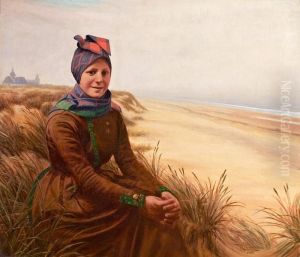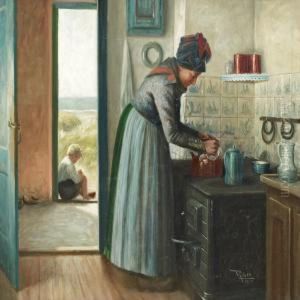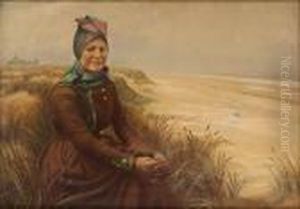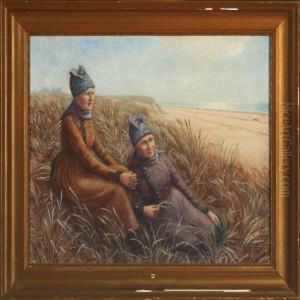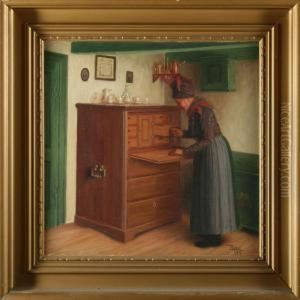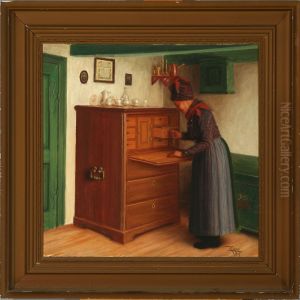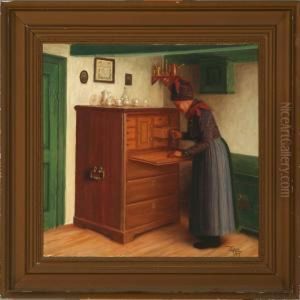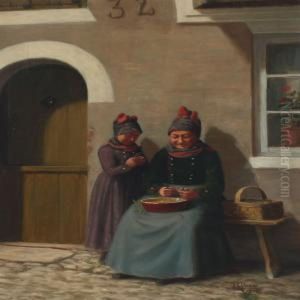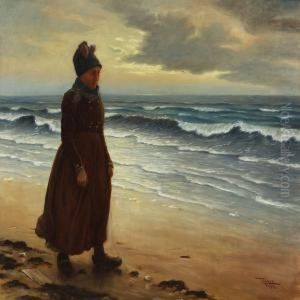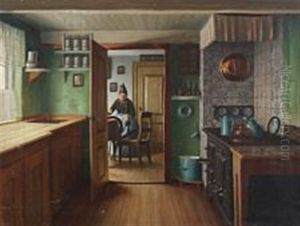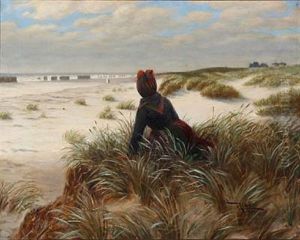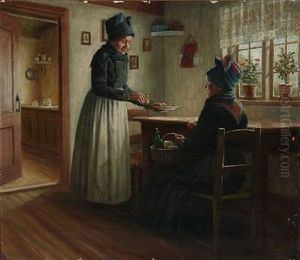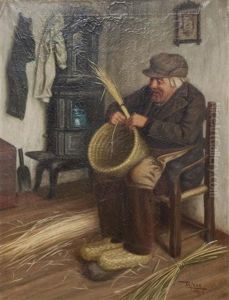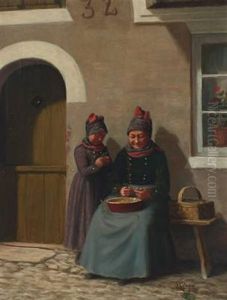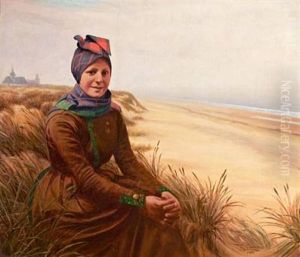Peder Riber Paintings
Peder Riber was a Danish artist born on December 29, 1845, in Skanderborg, Denmark. He was known primarily for his works as a landscape painter, capturing the tranquility and beauty of Danish rural and coastal scenes. His art reflects the influence of the Danish Golden Age, a period of exceptional creative activity in Denmark during the first half of the 19th century, which was characterized by a focus on light and landscape.
Riber received his early education in the arts at the Royal Danish Academy of Fine Arts in Copenhagen, where he studied from 1866 to 1872. During his time at the Academy, he was exposed to the teachings of prominent Danish artists who emphasized the importance of nature and natural light in painting. Following his formal education, Riber embarked on study trips throughout Denmark and Europe to further refine his skills and find inspiration for his work.
Throughout his career, Riber exhibited his paintings at various venues, including the Charlottenborg Spring Exhibition, an annual event showcasing contemporary Danish art. His works were well-received, and he gained a reputation for his ability to depict the Danish landscape with a sense of realism and poetic sensitivity. He often painted en plein air, a practice of painting outdoors that allows for direct observation of the landscape's light and color.
Riber's artistic output was prolific, and he remained active in the art community for many years. His paintings can be found in private collections and in the art museums of Denmark, contributing to the country's cultural heritage. He is less known internationally but remains a respected figure within the context of Danish art history.
Peder Riber passed away on April 10, 1932, in Copenhagen, leaving behind a legacy of landscape paintings that continue to be appreciated for their serene beauty and historical significance. His work serves as a testament to the enduring appeal of the Danish countryside and the artistic traditions of the Golden Age of Danish painting.
